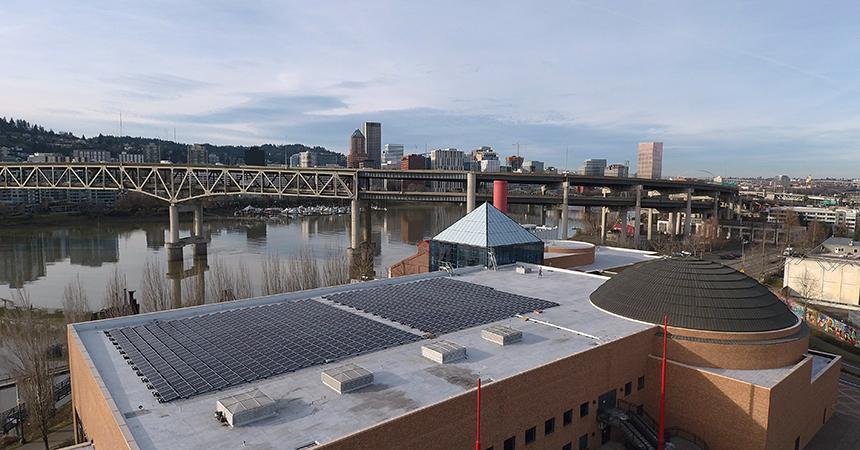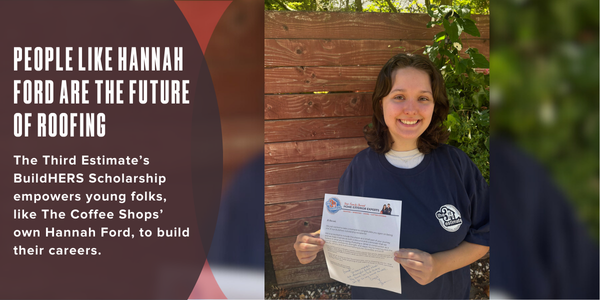UP TO THE MINUTE
Exploring roofing at the Oregon Museum of Science and Industry!
June 25, 2025 at 12:00 p.m.By Emma Peterson.
From an interactive cool roofing exhibit to solar panels on the roof, OMSI is teaching about sustainable development by example.
If you grew up in the Portland, Oregon metro area, the odds are pretty high that you took a field trip to the Oregon Museum of Science and Industry (OMSI) while in school. For those who aren't in the area, OMSI is an interactive museum in downtown Portland that boasts “several exhibition halls, a planetarium, a movie theater and even a former U.S. Navy submarine.” It has been a staple in the community since the grassroots organization Oregon Museum Foundation first set up exhibits in Washington Park back in the 1950s. By the 1970s there was a planetarium, structural museum and national exhibition and by 1986 OMSI was moved into its current location.

Cool roofs, which reflect thermal energy from the sun, are key to creating a healthier urban environment. As the Cool Roof Rating Council (CRRC) puts it, “Cool roofs have many benefits, including increasing building occupant comfort by keeping the space cooler, can cut costs by reducing the need for air-conditioning and extending the life of cooling equipment, extending roof service life, lowering CO2 emissions associated with fossil fuel-generated electricity used for air-conditioning and reduce the urban heat island effect by reflecting solar radiation back to the atmosphere.”
Having worked in the roofing industry for a while now, I have become very familiar with this concept. But standing in OMSI's Turbine Hall and watching the temperatures on the thermal camera drop as I switched a black roof out for a white roof took my understanding to a new level. And OMSI’s dedication to supporting sustainable development extends beyond ingenious exhibits like this and up to their own roof.
In 2022, OMSI added a 200-kW roof-mounted solar electric system to their rooftop. Energy Trust reports that the system is estimated to produce “238,865 kilowatt-hours of electricity annually, covering about 10% of OMSI’s yearly usage.” The reduction of carbon emissions by switching to this system is equivalent to removing 28 cars from the road annually! Clair Friskey, the facilities project manager at OMSI shared, “This reduction helps OMSI on its journey toward the goal of net zero carbon emissions. It also helps with OMSI’s mission to share educational exhibits and activities that inspire kids’ curiosity about renewable energy... We can’t be a science museum without addressing climate change and investing in renewable energy.”
This all is just the start for OMSI; they have big dreams of developing their area into a “showcase that advances climate solutions through transportation, next generation urban systems and technology, while also engaging OMSI learning experiences for the public and advocating informed action.” And next on the docket for their roof? Vegetation.
Image sources (in order of appearance): OMSI (cover), Emma Peterson, Energy Trust
Stay up to date with the latest industry news when you sign up for the Coffee Shop eNews.

About Emma
Emma Peterson is a writer at The Coffee Shops and AskARoofer™. Raised in the dreary and fantastical Pacific Northwest, she graduated in 2024 from Pacific University in Oregon with a degree in creative writing and minors in graphic design and Chinese language. Between overthinking everything a little bit, including this bio, she enjoys watching movies with friends, attending concerts and trying to cook new recipes.




















Comments
Leave a Reply
Have an account? Login to leave a comment!
Sign In